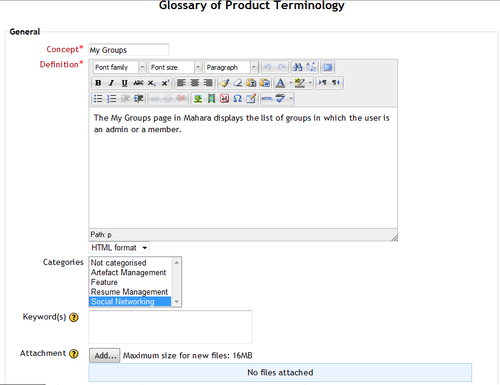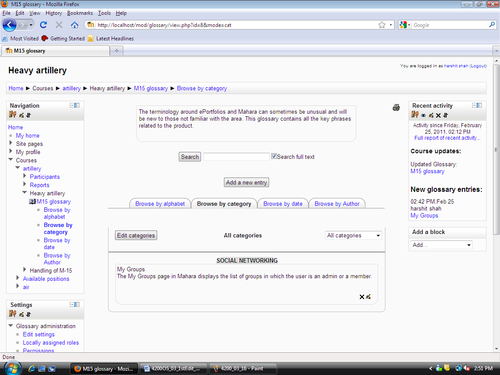Categories are managed within the glossary activity itself. So if you are on the course page, click into the glossary so you can see the browse by options.
- Click on Browse by category. This will show the category list.
- Click on the button Edit categories. This brings up the Category manager page.
- Initially there are no categories here, so to create one click on Add category.
- You will be prompted to enter a category Name and decide if you want this auto-linked. So type in the category Name and leave the Link option at No for now.
- Click Save changes to return to the Category manager page.
- Repeat steps 3 through 5 to add some more categories as required.
- Click on Back to return to the glossary category view.
- Although we have added categories, none show on this Browse by category view. The entries have not been tagged with a category as the category needs to be added when the entry is created, or by editing an existing glossary entry. So let's add a new entry by clicking on the Add a new entry button.

- Now you can see the list of categories from which you can select none, one, or many to tag the Concept. Create a new entry by adding the Concept, Definition, and selecting one or more Categories, and then click on Save changes.
Now that we have added some categories, and added in a new entry with a category selected, we can look at the glossary Browse by category page. As you can see there is now the Social Networking category and the My Groups entry, as shown in the following screenshot:

A glossary and the random glossary entry block can be used to present other types of content on the page and not just terminology.
Suppose you wanted to add a selection of product images into the course which would change each time the page loaded. How would you go about configuring the glossary and its entries for this use case?
Maybe your sales team could benefit from having the key unique selling points of the product appearing like a "quote of the day" on the page; how would you go about doing this?
What other use case for the glossary can you think of that would help support the product knowledge acquisition process?
Complex terminology seems to be everywhere now. How is complex terminology currently handled in your organization? Think about the products in your organization. Which would benefit from having a distinct glossary of terms to help reduce misunderstandings? Which already have printed glossaries but could use improvement?
